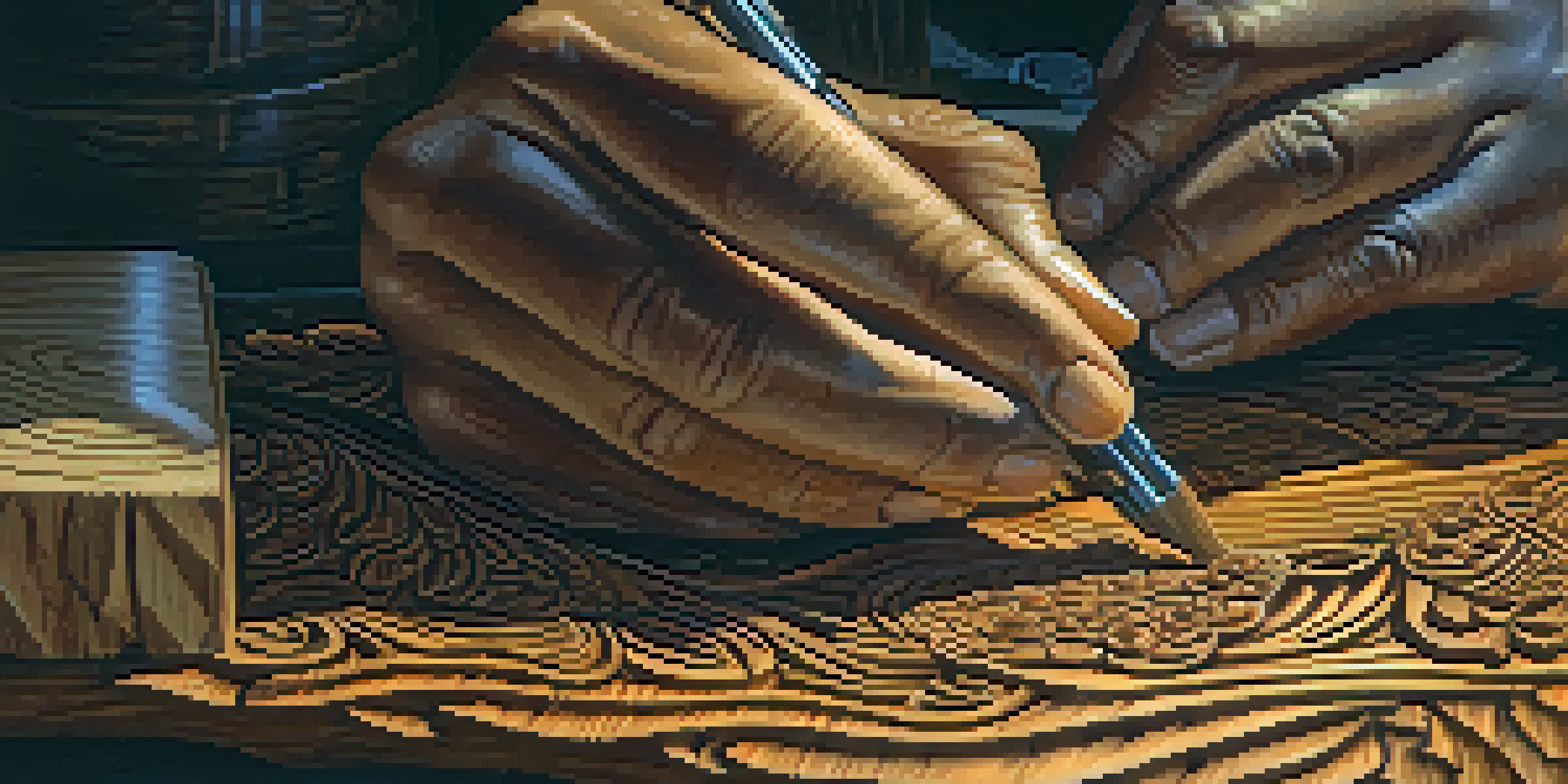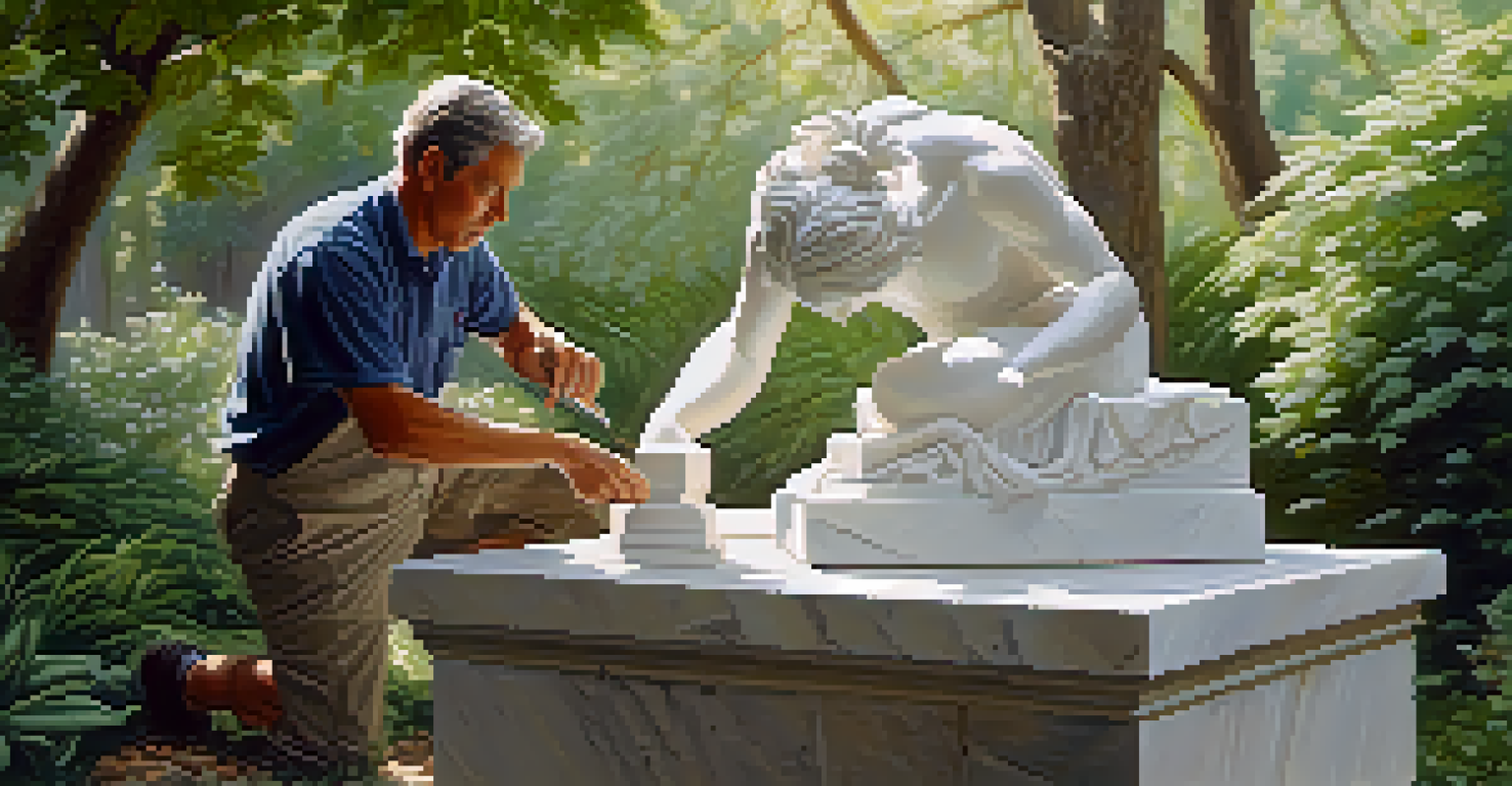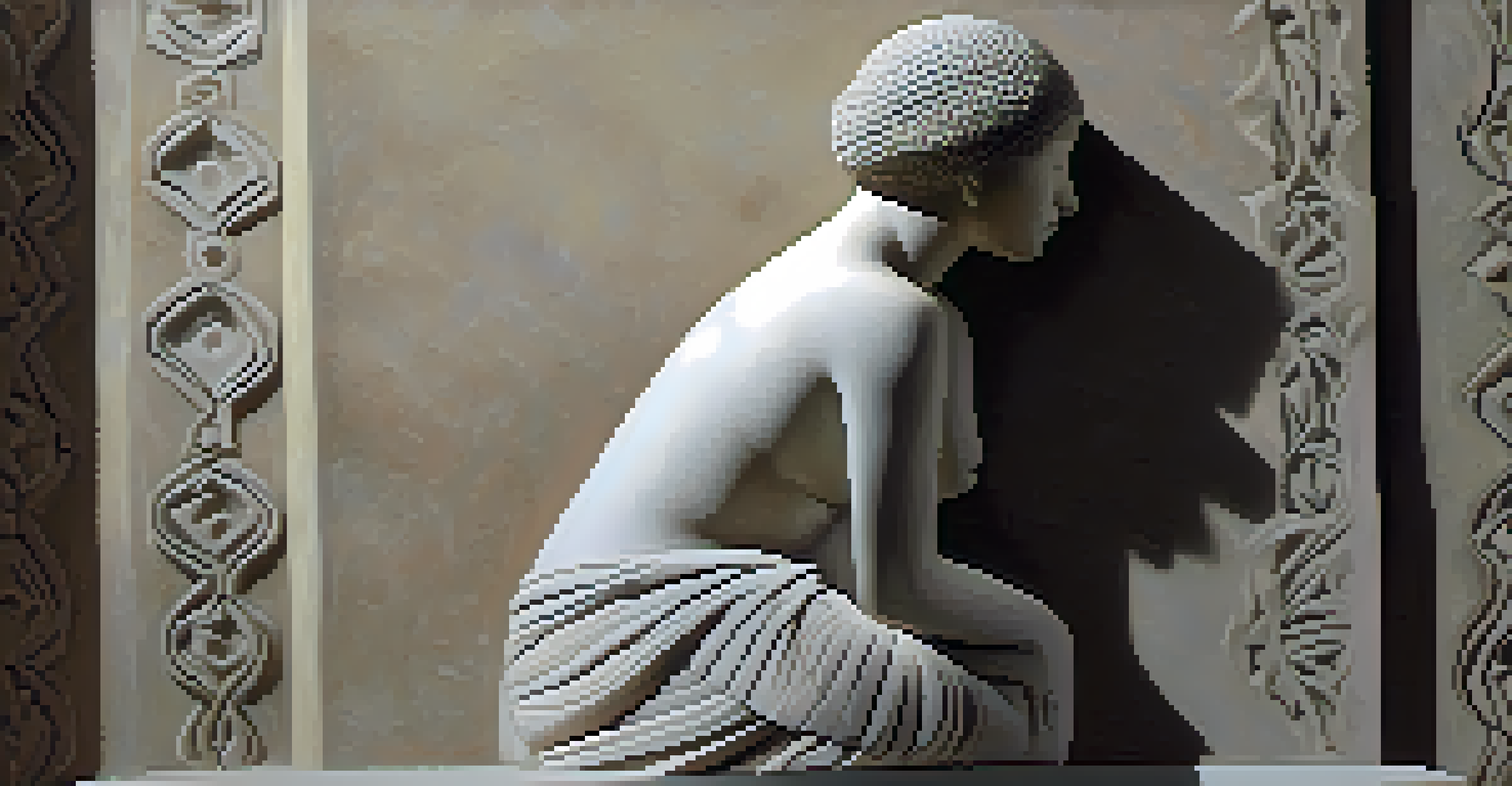Understanding Emotional Expression Through Carving Techniques

The Art of Carving: A Brief Overview
Carving is not just a technique; it's an art form that allows individuals to express their feelings and emotions through material. From wood to stone, each medium has its unique characteristics that influence the final piece. The tactile nature of carving also encourages a personal connection between the artist and their work, creating a dialogue that can be both intimate and revealing.
Art is the most beautiful of all lies.
As artists chip away at their chosen medium, they often experience a cathartic release, with each stroke reflecting their inner thoughts and feelings. This process can transform raw materials into profound expressions of joy, sorrow, or reflection. Just as a sculptor reveals the figure hidden within the stone, so too does an artist unveil their emotions through the act of carving.
In this way, carving becomes a powerful vehicle for emotional expression, bridging the gap between the artist's internal world and the external one. Each piece created tells a story, and the nuances in carving techniques can significantly impact how that story is perceived. This exploration of emotional expression through carving opens up a world of understanding and connection.
Understanding Emotional Expression in Art
Emotions are complex and often difficult to articulate, but art provides a unique language to convey them. In carving, the choice of materials, techniques, and even the tool's pressure can reflect a wide range of feelings. For instance, a gentle, flowing curve might suggest tranquility, while sharp, jagged edges might evoke tension or anger.

Artists often tap into their own experiences, using carving to express feelings that may be too painful or complex to articulate verbally. This form of expression can serve as a therapeutic outlet, allowing the artist to process their emotions in a tangible way. As viewers engage with these pieces, they may find resonance with their own emotional journeys, creating a shared experience between artist and audience.
Carving as Emotional Expression
Carving serves as a powerful medium for artists to convey complex emotions, transforming raw materials into profound expressions of their inner experiences.
Ultimately, understanding emotional expression in carving requires an openness to interpretation. Each viewer may experience the piece differently, which is what makes art so powerful. The emotional weight carried by a carved figure can elicit empathy, provoke thought, or even inspire change, showcasing the profound impact of artistic expression.
Different Carving Techniques and Their Emotional Impact
Carving techniques vary widely, and each technique can evoke different emotional responses. For example, relief carving creates a sense of depth and dimension that can draw the viewer in, while intaglio carving, which involves incising designs into a surface, may feel more intimate and personal. Understanding these distinctions can enhance our appreciation of the emotional narratives embedded within each piece.
The artist is the creator of beautiful things. The critic is one who can translate into another manner or a new material his impression of beautiful things.
The act of carving itself can also influence the emotional output. Subtractive techniques, where material is removed, may symbolize letting go or loss, while additive processes, like assembling parts, can represent growth or healing. This interplay between technique and emotion shows how deeply intertwined the two can be in the artistic process.
By exploring the emotional impact of different carving techniques, we can better appreciate the artist's intent and the stories they wish to tell. Each cut, curve, and contour serves as a testament to the emotions that inspired them, transforming simple materials into profound expressions of the human experience.
Cultural Influences on Carving and Emotion
Cultural backgrounds significantly shape how emotions are expressed through carving. Different cultures have unique carving traditions, each with its own symbolic meanings and techniques. For example, Indigenous cultures often use carving to connect with ancestral stories and nature, imbuing their work with deep emotional significance that resonates across generations.
These cultural influences can also dictate the materials used and the themes represented in carving. In some cultures, certain woods or stones might carry specific emotional or spiritual meanings, influencing the overall message of the artwork. This connection to culture adds layers of depth to the emotional expression found in carved pieces.
Cultural Influences in Carving
Different cultures shape the emotional narratives in carving, with unique traditions and techniques that add depth and meaning to the artwork.
Understanding these cultural contexts enriches our interpretations of carved art and highlights the diversity of emotional expression globally. As we engage with these different styles and techniques, we are reminded of the shared human experience, bridging gaps between cultures through the universal language of emotion.
Personal Stories: Carving as Emotional Healing
Many artists turn to carving as a form of emotional healing, using their craft to work through personal struggles. For instance, someone grieving a loss may find solace in shaping a piece that reflects their journey of healing. This process not only allows them to express their pain but also to create something beautiful from it, transforming sorrow into a poignant tribute.
Carving can serve as a meditative practice, providing a space for reflection and emotional processing. As the artist loses themselves in the rhythm of carving, they may uncover deeper feelings or insights that emerge through the physical act of creation. This connection between body and mind can be incredibly powerful, offering a pathway to understanding and acceptance.
These personal stories enrich the narrative of carving as emotional expression, showcasing how art can be a transformative experience. Each piece created carries the weight of the artist's journey, inviting viewers to witness and engage with these profound emotional landscapes.
The Role of Audience Interpretation in Emotional Carving
Once a carving is complete, the relationship between the artwork and its audience begins. Viewers bring their own experiences, feelings, and interpretations to the piece, which can dramatically alter its emotional impact. A carved figure intended to express joy might evoke a sense of nostalgia or sadness in someone else, demonstrating the power of personal perception.
This dynamic interaction highlights the importance of audience interpretation in understanding emotional expression through carving. Artists may intend to convey specific emotions, but the interpretation is ultimately in the hands of the viewer. This openness can lead to rich discussions and varied insights, showcasing the depth of emotional exploration inherent in carved art.
Audience Interpretation Matters
The emotional impact of a carving can shift dramatically based on individual viewer interpretations, highlighting the dynamic relationship between art and audience.
As we engage with carved pieces, we become participants in the emotional narrative, contributing our own stories and feelings. This shared experience can create connections between individuals, fostering empathy and understanding through the universal language of art.
Conclusion: The Lasting Impact of Emotional Carving
In conclusion, carving is a powerful medium for emotional expression, allowing artists to convey complex feelings in a tangible way. Through various techniques and cultural influences, each piece tells a unique story shaped by the artist's experiences and emotions. The act of carving not only transforms raw materials but also serves as a vehicle for healing and understanding.
As viewers, we are invited to explore these emotional landscapes, interpreting and connecting with the stories behind each carving. This shared journey enriches our understanding of both the artwork and ourselves, reminding us of the profound impact of emotional expression in art. The beauty of carving lies not just in the final product, but in the entire process of creation and connection.

Ultimately, emotional carving emphasizes the importance of art in our lives, offering a space for reflection, healing, and shared experiences. As we continue to explore this rich medium, we uncover the many ways in which carving can resonate with our own emotional journeys, fostering a deeper appreciation for the art form.